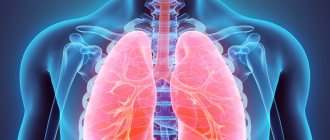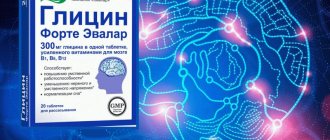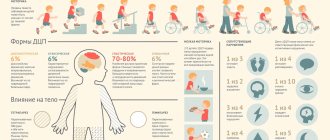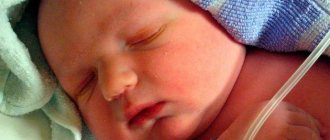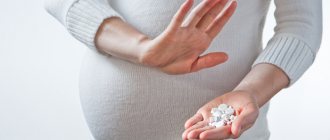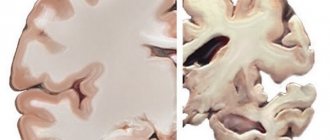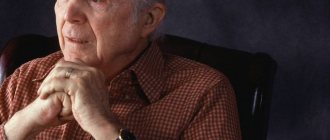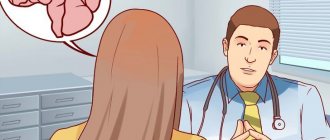History of disease detection
Cerebral palsy was identified and studied in the early 19th century by the British physician Little, which is why cerebral palsy is also called “Little’s disease.” The British scientist and doctor believed that the main cause of cerebral palsy was pathological labor, during which the child experiences severe oxygen starvation (hypoxia). Sigmund Freud also studied cerebral palsy in his time. He suggested that the cause of the disease was damage to the child’s central nervous system during intrauterine development. This assumption was proven in 1980. But subsequent studies revealed that complicated labor is the most common cause of cerebral palsy.
What can parents do?
Recognizing cerebral palsy in the first year of life is not easy because its symptoms often become apparent later. However, making a diagnosis in a timely manner means starting treatment on time and significantly making the future life of a sick baby much easier.
If your pregnancy was not going well, if you know that your child suffered complications during childbirth or in the first days of life, it is very important to regularly show him to a pediatrician and neurologist. If something worries you and the doctors, examinations can be carried out monthly to create a complete picture of its development. It often happens that it is the parents, in whose eyes the baby’s life passes, who encourage the local pediatrician to conduct more careful monitoring.
Inna D.: Many mothers of children with cerebral palsy, having found themselves in such trouble, withdraw into their shell and begin to develop complexes. But on the contrary, you need to go to people. I didn't understand this at first. Until my son was 2 years old, I didn’t go out with any of the other moms, I was alone all the time. And then something burned out in me, my attitude towards myself and my own life changed.
Now I go out into the yard, healthy children are playing around my child, who at first somewhat avoided him. And now he is welcome, they treat him completely normally, although he is different from them. But he sees other children and wants to do everything the same way as they do, he reaches out for them. If you begin to be ashamed of yourself and your child, those around you will treat you accordingly. You need to learn to live with it and be happy.
Natasha E.: I treat my child as if he is healthy. It may seem strange from the outside, but I try not to focus on my son’s health. I try to spend as much time with him as possible, on the one hand, to give him everything I can, and on the other hand, so as not to feel cut off from life.
We devote a lot of time to classes in various centers for the rehabilitation of children, in which different methods complement each other. At the same time, even though my son is a home child and not a kindergarten child, I found the opportunity to go to work twice a week. This is exactly what I need, because I am a restless person by nature.
Of course, parents will not be able to make a diagnosis on their own. Nevertheless, let us recall some symptoms that may indicate problems in the child’s central nervous system:
- There is a certain sequence in which motor skills appear in infants. So, for example, by a month and a half, in a position lying on his stomach, the child should steadily hold his head up. A delay in the development of motor skills in a child and a significant delay in speech development are a serious cause for concern. It is recommended that all parents keep a diary of their child’s development, in which the baby’s main achievements will be noted (first smile, holding his head, turning over, walking, first tooth, etc.).
- There is a group of unconditioned reflexes that appear in a child after birth and then gradually fade away. That’s what they’re called – newborn reflexes. For example, the palmar-oral reflex (when pressing on the palms of a newborn, he opens his mouth) or the automatic walking reflex (the baby, leaning on his legs, is slightly tilted forward, and he makes stepping movements). As a rule, these reflexes disappear in 1-2 months. If they remain for up to 4-6 months, then you should think about disruption of the central nervous system.
- Lack of interest in toys (usually the child begins to reach for them at about 4 months).
- Oculomotor disorders, such as severe strabismus.
- The child freezes for a while in some position or makes involuntary movements, nodding his head.
- The child does not show interest in contact with the mother, as a result of which there is an early refusal to breastfeed.
If you notice these symptoms, be sure to report them to your doctor.
General characteristics of the condition
Currently, doctors claim that cerebral palsy occurs immediately after birth or during pregnancy. There are many causes of the disease. But mainly it is damage to the central nervous system and associated neurological problems. During the disease, a wide variety of motor dysfunctions are observed. Muscular structures are most affected, which manifests itself in a lack of coordination. Motor activity is impaired due to damage to brain structures. The location and volume of these lesions determine the shape, nature and severity of muscle disorders, which can be single or in combination. Variants of major muscle disorders:
- Muscle tension.
- Movements of an involuntary chaotic nature.
- Various gait disorders.
- Limited mobility.
- Muscle contractions.
In addition to impaired motor function, cerebral palsy may be accompanied by deterioration in hearing and speech activity. In addition, very often the disease is accompanied by epilepsy and deviations in psychological and mental development. Children have disturbances in the sphere of sensations and perception.
Cerebral palsy does not progress, since the damage to the brain is localized and does not spread or invade new areas.
Tests that help the doctor make a diagnosis
- Echoencephalography is an ultrasound diagnostic method based on the principle of echolocation. This test can be carried out from birth. In a number of diseases of the central nervous system, it helps to identify the expansion of the ventricles of the brain and the asymmetry of its hemispheres.
- Neurosonography can be performed as long as the size of the large fontanelle allows. This ultrasound diagnostic method allows you to clarify the structure of the brain and determine the size of its ventricles.
- Electroencephalography (EEG) is a method for studying brain activity, based on recording the bioelectrical activity of individual zones, regions, and lobes of the brain. In some specialized clinics, this study is carried out from 6-7 months of life, and, if necessary, earlier. With cerebral palsy, pronounced age-related immaturity of the brain and some other conditions are revealed.
- Computed tomography (CT) and nuclear magnetic resonance (NMR) are the most informative methods available today. CT is a radiation diagnostic method that allows you to obtain a series of cross-sectional images of almost any part of the human body. NMR is a method based on resonant absorption of radio waves. It allows you to obtain two-dimensional images of the organ under study in any section and convert them into three-dimensional images. CT and NMR show defects in brain development, clarifying the picture of existing disorders.
- Electromyography is a fairly common method that studies the electrical activity of muscles. It should be recognized that it is not very informative from the point of view of diagnosing cerebral palsy and is carried out in later periods of the child’s life.
Causes
Cerebral palsy is caused by damage to certain areas of the brain that are developing. This damage can occur during pregnancy, when the baby’s brain is just beginning to form, during childbirth, or in the first years of life. In most cases, the exact cause is very difficult to determine. In the scientific literature, the causes of cerebral palsy are divided into several groups:
- Genetic causes (damage to the chromosomes of the mother or father, may occur due to aging of the body).
- Oxygen starvation of the brain (placental insufficiency both during childbirth and during pregnancy). Factors in the development of oxygen deficiency: placental abruption, long or, conversely, rapid labor, umbilical cord entanglement, incorrect presentation of the fetus.
- Infectious diseases, for example, encephalitis, meningitis, cause cerebral palsy. It is especially dangerous if the infection occurs with a high temperature.
- Toxic effects on a child (work in hazardous industries, smoking, drugs, alcohol).
- Physical impact (if the child was exposed to x-rays or radiation).
- Mechanical causes, a consequence of birth injuries.
Also factors that give rise to cerebral palsy are:
- Premature birth.
- Low weight of the newborn.
- Large baby weight or large fetus.
- Chronic diseases of women.
- Multiple pregnancy.
The risk of developing the disease increases if several factors affect the baby’s brain and nervous system.
Factors in the development of the disease in the first days of life may be:
- Hemolytic disease (a congenital disease that develops due to incompatibility of the blood of mother and child).
- Asphyxia of the child during labor.
- Entry of amniotic fluid into the fetal respiratory tract.
- Defects in the development of the respiratory organs.
Childhood cerebral palsy is a consequence of exposure to various factors that lead to disruption of the normal functioning of the child’s brain. The greatest impact has oxygen starvation, which develops due to premature placental abruption, breech position of the fetus, rapid or prolonged labor, and umbilical cord entanglement. Risk factors include Rh conflict between mother and baby and infections.
Sometimes the cause of the development of cerebral palsy is considered to be various pathologies of the vascular system. This is a misconception, since the child’s blood vessels are elastic and soft, they cannot rupture without reason. That is why vascular damage in a child can only occur as a result of severe trauma.
It is important to promptly establish the cause of the development of cerebral palsy, as this determines further tactics of working with the child and his treatment.
What is cerebral palsy?
What does the term cerebral palsy mean?
Cerebral palsy (CP) is a group of diseases of the central nervous system with leading non-progressive damage to the motor areas and motor pathways of the brain. Cerebral palsy occurs as a result of damage to the immature brain, which is in a state of maturation in the prenatal period or during early childhood. The basis for establishing a diagnosis of cerebral palsy after 6 months of a child’s life is the fact that movement disorders are etiopathogenetically associated with brain damage in the perinatal and early postnatal period and in their development have passed into the residual (stationary) period.
Causes of cerebral palsy
Among the causes of cerebral palsy, harmful effects on the brain in the prenatal period predominate - up to 95%, antenatal (during childbirth) harms come in second place, followed by postnatal (early postpartum period) factors. Damage to the child's brain during childbirth due to asphyxia and intracranial hemorrhage is superimposed on the existing phenomena of dysontoembryogenesis. Traumatic brain injuries in the postnatal period can also cause a deterioration in the child’s condition. Also among the reasons for the development of cerebral palsy it should be noted: extreme prematurity and hydrocephalus, malformations of the brain, traumatic or hypoxic-ischemic damage to the brain and spinal cord, intrauterine infection of the fetus (toxoplasmosis, chlamydia, uroplasmosis, herpes virus, rubella, etc.) , incompatibility of the Rh factor of mother and fetus - “Rh conflict”, autoimmune process, toxicosis of pregnancy, infectious, endocrine, chronic somatic diseases of the mother.
The mechanism of occurrence of cerebral palsy
As a result of exposure to harmful factors, the neurons of the main central motor-pyramidal pathway of the brain are destroyed, which subsequently leads to disruption of the formation of conditioned motor and anti-gravity reflexes. Damage or destruction of the cellular structures of the brain responsible for motor, speech or cognitive functions occurs, and certain forms of cerebral palsy occur. As a result, the child cannot walk, perform precise movements, speak, etc.
The main clinical manifestations of cerebral palsy: As a result of underdevelopment or damage to the brain in cerebral palsy, the motor pathways of the brain are primarily affected, and there is also a delay and disruption of its maturation as a whole. Therefore, children suffering from cerebral palsy experience a variety of disorders - movement disorders (100%), which may be the only manifestation of the disease, as well as intellectual, speech, and disorders of higher cortical functions. Motor and sensory disorders from the first days of life of a child with cerebral palsy create unfavorable conditions for the development of cognitive and speech activity, motivational needs and personal sphere.
What forms of cerebral palsy occur in children?
Cerebral palsy combines the following forms: double hemiplegia, spastic diplegia, hyperkinetic, atonic-astatic, hemiparetic. The formation of various neurological abnormalities and forms of cerebral palsy depends on the location and size of the lesion in the brain. For example, focal, multifocal necrosis and periventricular leukomalacia of nerve cells often later develop into multiple cysts, porencephaly, hydrocephalus, which leads to hemiparetic and spastic forms of cerebral palsy, often in combination with partial epilepsy, mental retardation, etc.
What treatment methods for cerebral palsy are currently used?
Currently, there are many different directions in the treatment of cerebral palsy. They can be divided into several groups:
- various types of massage and physical therapy: methods of Bobath, Lindenman, Frelich, Voight, Cabot, Phelps, Bortzeld, imperative-corrective gymnastics by Blum, massage with inflatable objects by Polsky, classes in “Adele”, “Gravistat” costumes, hippotherapy and other methods ( only about 25);
- surgical treatment methods: tendon trimming, step-by-step casting;
- administration of botulinum toxin and stem cells;
- injection with various pharmacological drugs;
- use of orthopedic devices;
- various physiotherapeutic procedures: barotherapy, cryotherapy, kinesiotherapy, electrical muscle stimulation, manual therapy, acupuncture, oxygen therapy, etc.;
- methods of speech therapy and psychological correction, music therapy, color therapy, educational influence, occupational therapy.
What is the effectiveness of these techniques?
There is no doubt that all practically existing methods make a certain contribution to the treatment of cerebral palsy, but one must keep in mind that all of them are not radical, but symptomatic. Most of the available treatment methods affect one or more symptoms (decreased muscle tone, correction of pathological limbs, correction of pseudobulbar disorders) without affecting the cause of the disease. Thus, they are not pathogenetic and this determines their low clinical effectiveness.
Are there pathogenetic methods for treating cerebral palsy?
Specialists of the CORTEX MC have developed a new highly effective method of treating cerebral palsy - BIOPHYSICAL ACTIVATION OF NEUROMOTOR STRUCTURES (BFA) - the main pathogenetic neurospecific treatment. The pathogenetic basis of cerebral palsy is damage to the neurons of the main central motor-pyramidal pathway of the brain, with disruption of the formation of motor and anti-gravity reflexes. When using the main pathogenetic therapy for movement disorders - BPA - gentle stimulation of the pyramidal motor pathway is carried out using a neurophysiological device, aimed at restoring and maintaining lost and formation of new interneuron connections in the motor, sensory and psycho-speech centers of the cerebral cortex and spinal cord centers. Treatment is carried out by applying hardware to the medial and lateral bundles of fibers of the dorsal roots of the spinal cord through projection zones on the patient’s body. There is a direct effect on the centers of the brain and spinal cord responsible for movement, coordination, sensitivity, and speech. During the treatment of cerebral palsy using BPA, not only neurons are activated, but also processes leading to the restoration of interneuron reflex connections. As a result, muscle tone is normalized and body balance is regulated, the center of gravity is stabilized, and the coordinated activity of antagonist muscles is improved.
With cerebral palsy, there are often not only motor disorders, but also speech disorders, as well as mental and intellectual disabilities. How should they be treated?
BPA – directly affects the brain through the projection zones of speech, praxis, gnosis; on the articulatory apparatus, promotes their activation, stimulates the development of stable connections and improves the functioning of the first and second signaling systems of the brain, which integrate all signals from the outside world and form the child’s meaningful responses, his speech, and promotes his socialization. The treatment technique is based both on the activation of the speech centers themselves (Broca's area, Wernicke's area, angular gyrus, etc.), and on the restoration of lost connections not only between centers, but also interhemispheric ones. In addition, scattered interneuronal connections of speech centers with other areas of the brain involved in speech function are restored.
As we noted above, cerebral palsy is often characterized by the presence of concomitant syndromes, the appearance of which depends on a combination of negative factors affecting the development and prognosis of the disease. Therefore, it is important to know the causes of neurological abnormalities and be able to diagnose them.
At the Cortex MC, all patients admitted for treatment undergo a comprehensive examination :
- initial examination by a pediatric neurologist,
- pediatrician consultation,
- testing of speech functions by a speech therapist-defectologist,
- psychological counseling;
- neurophysiological examination: computer EEG, registration of evoked potentials - auditory, visual, somatosensory, cognitive,
- high-precision virological and immunological blood tests, serological and immunochemical diagnostics TORCH - syndrome (neuroinfections) with a quantitative assessment of cellular and humoral immunity, a screening blood test to exclude an autoimmune demyelinating process with a percentage determination of the degree of destruction of the white matter of the brain and spinal cord, as well as a quantitative assessment of the degree damage to nervous tissue as a result of hypoxia.
All of the above diagnostic methods make it possible to predict the further course of the disease and formulate the most optimal treatment complex for each patient, as well as confirm, clarify or change the diagnosis.
Why is treatment divided into primary and auxiliary?
The main pathogenetic treatment affects the mechanism (pathogenesis) of the occurrence and development of the disease. Auxiliary treatment consolidates the results of the main treatment and affects the accompanying syndromes of the main disease. Auxiliary methods are designed to enhance the positive effect of the main methods of treating this disease. Therefore, BPA, the main pathogenetic treatment of cerebral palsy, is necessarily carried out in combination with various types of auxiliary rehabilitation treatment.
What techniques are used in the complex of auxiliary treatment of cerebral palsy?
Neuroprotective therapy : to regulate the integrative activity of the brain and replenish the deficit of the brain’s energy system, our medical center uses lymph intercellular therapy, which allows the use of small doses of cerebroprotectors that are administered endolymphatically and enter the brain tissue, bypassing the blood-brain barrier.
As the most effective and virtually painless administration of drugs with neurotrophic and antioxidant effects, the center uses the technique of endonasal cortexin electrophoresis , which allows drugs to be administered directly into the brain tissue.
To more effectively perform physical exercises and facilitate the verticalization of patients, the CORTEX MC successfully uses the method of anti-gravity kinesitherapy using the Atlant neuro-orthopedic rehabilitation pneumatic suit , made on the basis of the VKK-6 altitude-compensating flight suit.
In order to normalize muscle tone, therapeutic differentiated massage is used.
In order to regulate the stato-kinetic function of the central nervous system (coordination and accuracy of movements), the plantar support load simulator “Corvit” is used. The device allows you to simulate indicators of physical impact on the foot when walking, which promotes the activation of supporting afferentation, which is responsible for normalizing the processes of excitation and inhibition in the central nervous system, reducing muscle spasticity, developing and restoring coordination of movements.
Speech therapy correction includes diagnosis of the degree of speech disorders, daily classes aimed at improving speech function and speech therapy massage to correct various types of dysarthria and dysphagia (swallowing disorders).
A clinical psychologist carries out a set of pathodiagnostic and psychocorrective measures for patients entering treatment. After conducting psychodiagnostic measures, an individual psychological program for correcting disorders in a particular area is selected for a particular child and further recommendations.
Complex treatment promotes the emergence of new and development of existing motor skills in children - sitting, standing, walking, the development of fine motor skills, coordination of movements, and also improves speech and cognitive functions of the central nervous system.
Signs
Symptoms of cerebral palsy are divided into late and early. Early scientists include:
- The child is lagging behind in physical development (does not hold his head up, does not crawl, does not sit, does not walk on time).
- Reflexes that are characteristic of infants persist as the child grows up (the movements of the limbs are chaotic for a long time, the grasping reflex, the stepping reflex).
- The child uses only one hand, this is clearly noticeable during play or in everyday life.
- The child is not interested in toys.
- If you put a child on his feet, he only stands on his toes.
Late signs of cerebral palsy are:
- Skeletal deformity, the limb in the affected area is much shorter.
- Loss of coordination, low mobility of the child.
- Frequent limb cramps.
- Gait is difficult, mostly on the toes.
- Swallowing problems.
- Salivation.
- Speech problems.
- Myopia, strabismus.
- Disease of the gastrointestinal tract.
- Involuntary defecation and urination.
- Emotional and psychological problems.
- Children have difficulty writing, reading, and counting.
The degree of disability depends on the level of development of the child and the efforts of relatives. The higher the level of intelligence, the less motor dysfunction the baby has.
Early signs of pathology in newborns and infants
The disease is associated with damage to neurons or glial structures under the influence of various pathogenic factors.
At the same time, the maturation and interaction of certain levels of the central nervous system from the midbrain and diencephalon to the subcortical structures and cerebral cortex changes.
Clinical manifestations of the disease are associated with changes in the normal functioning of certain areas of the central nervous system, so the signs of the disease are expressed differently in each individual child.
The first is a history of pregnancy and childbirth - the highest likelihood of developing cerebral palsy are babies with a complicated pregnancy, as well as a combination of a difficult pregnancy and difficult childbirth.
These children are at risk and are monitored more closely by a pediatrician and a pediatric neurologist with mandatory monitoring of the dynamics of physical and psycho-emotional development.
Secondly, in children during the newborn period, reflexes appear and fade in a certain sequence.
If you suspect cerebral palsy, you need to pay attention to the following reflexes:
- protective;
- "crawl";
- "supports";
- prehensile;
- Moro reflex;
- hand-mouth reflex.
For each reflex there is a time for its appearance and its extinction - if these reflexes persist longer in a child, this is a cause for concern, but only a specialist can clarify the likelihood of a possible pathology.
Third, there are warning signs.
The most likely signs of the development of cerebral palsy in newborns include:
- Change in muscle tone:
- hypertonicity – the child’s limbs are in an unnatural forced position, muscle spasms and impaired voluntary movements are noted;
- hypotension – a significant decrease in muscle tone.
- The appearance of paresis or paralysis with partial or complete immobilization of the limbs.
- Pain syndrome, which manifests itself in the form of a constant loud or monotonous cry.
- Hyperkinesis (chaotic movement of the limbs), tremors of the limbs and/or chin.
- Uncoordinated movements of the eyeballs, “setting sun” syndrome, severe strabismus.
- Pathological movements - unnatural postures, grimaces, head turns.
- Cramps.
- Swallowing and sucking disorders.
Typical symptoms of cerebral palsy in children under one year of age are:
- Retarded physical development:
- the baby does not hold his head up for a long time and does not turn over;
- at 4 months the baby does not reach for a toy, weakly reacts to sound by turning his head and does not hold his head;
- when placing the child on his feet, persistently stand on his toes, and not on his full foot;
- the child does not sit independently after 7-8 months.
- There are no conscious movements in the limbs, hyperkinesis or pathological movements are noted.
- Persistent disturbances in coordination of movements are noted.
- Delayed mental development, significant lag in terms of age (does not smile, does not talk).
- There are hearing impairments (quite often) or vision impairments (impaired gaze fixation, strabismus, uncoordinated movements of the eyeballs).
- Sucking and swallowing disorders; as the child grows, chewing becomes impaired; the act of swallowing is accompanied by frequent choking.
- Paresis and paralysis.
- Trembling, convulsions, fixation of gaze (“freezing”).
- Increased nervous excitability or lethargy with lack of interest in the outside world.
- Persistent sleep disturbances.
- Endocrine disorders in the form of dystrophy or obesity, hypothyroidism, growth retardation.
- Asymmetry of body position caused by hypotension or hypertonicity of a certain muscle group.
Forms
There are two classifications of the disease - the first is based on the age of the baby, the second on the form of the disorder.
The disease is divided according to age:
- Early – symptoms appear before the baby is 6 months old.
- Residual initial – the disease is detected from 6 months to 2 years.
- Residual later – after 2 years.
Regarding the forms of cerebral palsy, they are classified:
- Spastic tetraplegia - affects the areas of the brain that are responsible for motor function. This usually happens during the prenatal period of a child’s development due to oxygen deficiency. This type of cerebral palsy is one of the most severe and serious forms of the disease. The disease manifests itself in the form of problems with swallowing, disturbances in the formation of sounds and their reproduction, paresis of the muscles of the limbs, problems with attention, visual impairment, strabismus, and mental retardation.
- Spastic diplegia is the most common type of disease, accounting for about 75% of all cases. As a rule, it is detected in children who were born as a result of premature birth. The disease manifests itself in the form of damage to the lower extremities, mental and mental development delays, and speech problems. But, despite all the manifestations of the disease, patients with cerebral palsy of this type successfully study at school and are adapted to society. They perform certain types of work.
- The hemiplegic form often shows disturbances in the movement of the upper limbs. The cause of this form of cerebral palsy is cerebral hemorrhage or infarction in the brain. Such children have good learning abilities, they can learn a whole range of actions, but their speed will not be great. Children who suffer from this form of the disease often experience mental retardation, delayed speech development, mental problems, and frequent epileptic seizures.
- The dyskinetic form is caused by hemolytic disease (a congenital disease that develops when there is a Rh conflict between the blood of the mother and baby). Such children have involuntary body movements, paresis and paralysis appear in all parts of the body. Limb positions are not normal. Moreover, this type of cerebral palsy is considered the mildest form. Children can study at school, not be inferior in intellectual abilities to their peers, they can graduate from a higher educational institution, and live a normal life in society.
- Ataxic form - the main causes of the disease are fetal hypoxia or injuries to the frontal lobes of the brain. A sign of this form is paresis of the vocal cords and muscles of the larynx, trembling of the limbs, involuntary movements. As a rule, children suffer from mental retardation. With proper work with a child, he can learn to stand and even walk.
- Mixed form – when a patient has symptoms of several forms of the disease.
It should be noted that it is difficult to reliably diagnose the form of cerebral palsy in newborns; characteristic signs are revealed by 6 months of the baby’s life.
Features of development
In infants, cerebral palsy has almost no obvious manifestations (at least until 3-4 months). After this, the baby begins to rapidly lag behind his healthy peers in development.
Children with cerebral palsy have difficulty in coordinated movements. As the child gets older, he will try to avoid them. If at the same time intellectual abilities are preserved, then the kids grow up “slow”; they do everything very slowly, unhurriedly.
Some forms of cerebral palsy “deform” the personality so much that the child can become withdrawn, embittered, and aggressive (for no apparent reason). However, it would be wrong to attribute everything solely to the form of the disease. Parents play a very important role in shaping a child’s character. If they are positive, good-natured, and encourage the child’s achievements, then the likelihood of getting an aggressive child is minimized.
Reflexes (Moro, grasping and others), which are characteristic of all newborns, disappear in order to give way to new skills. In children with cerebral palsy, these innate reflexes are often preserved, and this makes it difficult to learn new movements.
Many children with cerebral palsy are characterized by insufficient body weight, minimal subcutaneous fat, and weak (often blackened and crooked) teeth. Individual developmental characteristics are determined by a single factor - the preservation of intellectual potential. If it exists, then a lot can be adjusted and corrected.
Such devices include special furniture, tables and chairs, some verticalizers, splints, a bicycle, exercise equipment and complex orthopedic shoes. All furniture is equipped with body position regulators and seat belts. It can be one item (chair or table) or a whole set, where each element is combined and matched with another.
This bicycle is equipped with attachments for the hands, legs and feet, as well as a cane, which allows parents to push the device with the child forward if the child cannot pedal independently.
Using a bicycle allows you to prepare your child well for learning to walk; it trains the leg muscles and alternating movements.
Exercise equipment
The modern medical industry has stepped far forward, and children with cerebral palsy today have access to not only the most familiar exercise bikes, but also real exoskeletons that will take on all the “work” of the muscles. In this case, the child will make movements together with the exoskeleton, due to which reflexive correct movement will begin to form.
Adele's costume is very reminiscent of the outfit of a volunteer cosmonaut from a science-fiction film, but this should not be scary. The average course of treatment in such an outfit is about a month. In this case, a child (from 3 years old) will have to walk, bend and unbend, and squat (if possible) in this suit for 3-4 hours a day.
After such courses, which can be completed at a rehabilitation center, children feel more confident, they have easier control of their own arms and legs, their arches are strengthened, their stride appears wider, and they learn new skills. Doctors say that the risk of developing “fossilized” joints is reduced several times.
And at home, in a rehabilitation center, you can use the Gross simulator. It is very easy to attach it in the country house, in the apartment, on the street, and even in the pool so that the child can exercise in the water. The simulator is a movable block with a tensioned cable, elastic rods, and hand rings for the child to hold on to. Insurance and a special lever-carbine mechanism are provided.
Classes on such a simple simulator (according to the Ministry of Health) give amazing results - every fifth child with cerebral palsy develops the skills to move their legs independently, about a third of children with this diagnosis, after systematic training, were able to attend specialized schools and study.
In half of the cases, speech development improves. More than half of the children had significantly improved coordination of movements, 70% of the children had the prerequisites for acquiring new skills - they were able to learn to sit, stand up, and take their first steps.
Children from 1 year old can play with special toys for “special” babies; they include sets for fine motor skills with small movable and securely fastened parts. The production of special toys for medical rehabilitation of such children is carried out in St. Petersburg; they are produced under the Tana-SPb brand. Unfortunately, the cost of the sets is quite high. A complete set costs about 40 thousand rubles, but it is possible to buy one or two toys from the set (1500-2000 rubles each).
These motor toys are also great for children with severe mental retardation; they stimulate not only motor skills, but also many other functions of the child’s body.
Symptoms of cerebral palsy depend on the area of the brain affected.
The reasons that caused the development of cerebral palsy in the prenatal period include:
- intrauterine (TORCH) infections (toxoplasmosis, cytomegalovirus, herpes infection, hepatitis, rubella, chlamydia);
- severe forms of hemolytic disease (Rhesus - conflict or liver failure in the fetus due to the breakdown of hemoglobin);
- toxic effects on the fetus (bilirubin encephalopathy, abuse of alcohol, nicotine, drugs, persistent nephropathy);
- infectious diseases in the first and second trimester (rubella, influenza, chicken pox, infectious mononucleosis, common herpes or toxoplasmosis);
- progression of various specific infections (syphilis, tuberculosis);
- complex somatic diseases in a pregnant woman (diabetes mellitus, heart defects, renal failure, hypertension with high blood pressure, arrhythmias);
- taking medications, especially tranquilizers and antidepressants;
- severe and prolonged fetoplacental insufficiency with persistent oxygen starvation of the fetus;
- threat of miscarriage;
- severe toxicosis;
- post-term or multiple pregnancy;
- threat of miscarriage;
- injuries during pregnancy.
In 10% of cases, the development of cerebral palsy is associated with:
- with birth injuries against the background of severe asphyxia against the background of tight entanglement of the umbilical cord or placental abruption with single or multiple hemorrhages in the substance of the brain, cerebellum, ventricles or in the intrathecal space;
- pathological childbirth (if the position of the fetus is disturbed, rapid labor);
- childbirth, before 33 weeks of gestation - the brain is still immature and changes are possible during and after childbirth;
- active infectious diseases after childbirth with persistent intoxication that provoked neuronal damage;
- exposure to medications or toxic factors after childbirth;
- complex head injuries after birth.
It is important to know that in most cases the baby is already born with the prerequisites for the formation of cerebral palsy and the earlier the first symptoms of the disease are noticed, the easier the form of the disease will develop in the child.
Many problems can be avoided if treated as early as possible.
Therefore, it is important to know what the first signs appear in newborns and infants with cerebral palsy.
Diagnosis of the condition
The disease is diagnosed based on the identified characteristic signs. Conditioned reflexes and muscle tone are checked, and an MRI of the brain is also taken. If there is a suspicion of brain damage, an EEG and ultrasound are performed.
A timely diagnosis is very important for a young patient. It is important to recognize the disorder. Children should be examined in the maternity hospital; doctors pay special attention to children:
- With light weight.
- Those born prematurely.
- Having defects and developmental anomalies.
- With a diagnosis of newborn jaundice.
- Born as a result of difficult and prolonged labor.
- With infectious diseases.
Cerebral palsy is diagnosed by a neurologist, but he may additionally prescribe other tests to clarify the diagnosis.
Drug treatment for cerebral palsy
Is cerebral palsy treated in adults and children? The fundamental point in the treatment of such a disease is the use of certain medications.
For the development of cerebral palsy, the following categories of medications can be used:
Features of children with cerebral palsy
The main cause of cerebral palsy is a change in the structure of the brain, and the main symptoms are impaired motor activity. Movement disorders occur due to disruptions in the transmission of signals from the brain to the muscles. Cerebral palsy is characterized by the presence of speech, motor, emotional, and mental disorders. They are associated with damage to different muscle groups and brain tissue.
The developmental difficulties of such children are due to enormous difficulties during the performance of complex or coordinated movements. Such children have limited independence, the ability to move freely, and only a partial ability for self-care.
Any movements of children are slow, which is why there is a disproportion between thinking and the idea of the surrounding reality. Logical thinking and abstract knowledge are formed well in such children, and the idea of the world around them is formed only in conditions of constant movement of the child, as a result of which muscle memory is developed.
Children with cerebral palsy are not able to study for a long time; they absorb less information compared to their peers. These children have difficulties with counting and it is very difficult for them to learn mathematical operations.
Emotionally, they are vulnerable, impressionable, and very attached to their parents and guardians.
They usually have a speech disorder, which is why their circle of communication with peers is always limited.
What is cerebral palsy
Cerebral palsy is a multifactorial disease, and it is difficult to accurately determine the cause of its development in each specific case.
Most often, this is due to severe immaturity and/or damage to brain structures with disruption of their interaction, caused by exposure to various pathological agents on the central nervous system of the fetus or newborn.
And at the same time, it has been proven that cerebral palsy is not inherited, it is impossible to become infected with it or get sick unexpectedly.
Cerebral palsy is a group of different neurological syndromes that arise as a result of disruption of the brain structures of the fetus or newborn.
They are responsible for coordinating the distribution of muscle tone and the formation of reflex mechanisms responsible for maintaining the balance of the body.
Treatment and rehabilitation of cerebral palsy
The goal and main task of all therapeutic measures is to reduce the manifestations of signs and symptoms of the disease. It is impossible to completely cure the disease, but with the right method, it is possible to ensure that the child acquires the necessary skills and abilities for life.
To choose the nature of treatment, the doctor needs to know the form of cerebral palsy, concomitant diseases and the severity of the disease.
As a rule, anticonvulsants and relaxants are prescribed as medications.
Currently, there are no universal treatments for cerebral palsy. The following methods have proven themselves well:
- Massage.
- Physiotherapy.
- Medical drugs that are aimed at normalizing muscle tone (Dysport, Mydocalm, Baclofen).
The following methods and techniques have a positive effect in treating the disease:
- Bobath therapy.
- Voight's method.
- Load suit "Gravistat" or "Adele".
- Pneumatic suit "Atlant".
- Speech therapy classes.
- Assistive devices (chair, walkers, stand-up machines, exercise equipment, bicycles).
Balneotherapy and hydrotherapy in the pool are successfully used. It is easier for a child to move in water; he first learns to walk in water, after which it is easier for him to perform the same actions on land. Water treatments are completed with hydromassage.
Mud therapy has a good effect, as it has a stimulating effect on nerve cells and relieves muscle tone. In addition, hypertonicity is well normalized with the help of electrophoresis, magnetic therapy, and paraffin therapy.
If changes in muscle structure cannot be corrected, then surgical treatment of cerebral palsy is resorted to. The operations are aimed at performing plastic surgery of muscles and tendons. If it is possible to correct disorders in the tissues of the nervous system, then neurosurgical interventions, stimulation of the spinal cord, and removal of damaged areas are performed.
According to reviews, cerebral palsy must be treated as early as possible, since the condition may worsen due to the gradual development of the orthopedic problem. This may be curvature of the spine, flat feet, club feet, hip dysplasia, and others. If you miss time, you will have to treat not only cerebral palsy, but also correct orthopedic disorders by wearing spacers, splints, and splints.
Treatment
There is currently no causal treatment for cerebral palsy, meaning there are no effective medications that can reverse existing damage and restore healthy brain tissue. However, it is possible to implement rehabilitation measures that can help the child achieve the best results to the extent that the brain damage allows. In practice, this means that the results of treatment depend not only on the chosen method of rehabilitation, but also, first of all, on the degree of damage to brain function.
One can imagine a very long list of methods used. It is important that the child is under systematic, multidisciplinary care and undergoes treatment adapted to his needs and capabilities, carried out in the long term. On the one hand, therapy should not be neglected, and on the other hand, the child should not be overloaded with too much work. It is best if the sick child has a regular attending physician, preferably a pediatrician, rehabilitation doctor or neurologist, who coordinates therapy and evaluates its results.
In the rehabilitation of children with cerebral palsy, various methods are used, such as the Bobath therapy method (neurodevelopmental therapy), the Vojta therapy method, orthopedic equipment (weights, shoes, strollers, seats, verticalizers), administration of botulinum toxin, exercises using special clothing, methods hydrotherapy and orthopedic surgery.
Cerebral palsy is a chronic disease that accompanies the patient for many years and impairs his mobility.
The quality of life of patients depends on the degree of independence they have achieved. In severe forms of the disease, patients are people who need help with normal daily activities. In milder forms and with good intellectual development, patients can live a full life. The information presented in this article is intended for informational purposes only and cannot replace professional advice and qualified medical care. If you have the slightest suspicion that your child has this disease, be sure to consult a doctor!
Principles of working with children
Both doctors and teachers need to deal with children who suffer from cerebral palsy. It is better to start working from an early age for children - from 1 to 3 years old. It is necessary to take them to classes where they will be taught to speak, perform everyday activities, and teach self-service skills. Such cerebral palsy training centers develop the ability to interact and communicate with peers.
When working with such children, much attention is paid to the development of speech and behavior in society. Each child receives an individual approach that takes into account age and form of pathology. Children are usually taught in groups in the form of a game, led by a competent specialist. The movements of each child are carefully observed, incorrect movements are corrected, and correct ones are encouraged.
To develop correct movement skills, special devices and devices are used to support the head, limbs, and torso in the desired position. The child trains and explores the surrounding space.
Is it possible to prevent cerebral palsy?
There is no clear answer to this question yet. You can say “no,” because it is not always possible to prevent, say, acute fetal hypoxia during childbirth. But you can also say yes. To prevent cerebral palsy in children, we need those basic, mandatory measures for everyone, the importance of which we sometimes don’t even think about.
This includes pregnancy planning, cure for chronic infections, timely vaccination against rubella, regular visits to the obstetrician-gynecologist, extreme care for yourself and the child, exclusion of contacts with patients with viral diseases, control of blood pressure and the level of anti-Rhesus antibodies during pregnancy, prevention of premature birth. .
Exercise therapy and massage
Massage for cerebral palsy begins at 1.5 months. The course is conducted only by a specialist who can assess muscle tone, frequency of sessions, and degree of impact. It is not recommended to massage yourself.
Physiotherapy exercises include a complex of therapy; exercises must be regular. The complexity of the exercises is set individually for each child, taking into account age, abilities, level of mental and emotional development. The load should increase gradually as the child's condition improves.
As a rule, the following exercises are performed for cerebral palsy:
- Stretching.
- Decreased muscle tone.
- Strengthening individual muscle groups.
- Endurance exercises.
- For balance.
- To increase muscle strength.
Surgery
Is cerebral palsy treated surgically? Surgery is one of many ways to treat this disease. The main goal of surgery is to give the child the opportunity to move. If patients do not have such a prospect, then operations can reduce pain, improve skills during hygiene procedures, help sit down, etc.
As a rule, during surgery for cerebral palsy, doctors perform tendon transfer or removal. The specialist is also able to correct scoliosis, change the incorrect position of the limbs, correct the location of the hip joints, and relieve imbalance of spastic muscles.
Today, methods of functional neurosurgery are actively used for cerebral palsy, namely:
Disability
Disability for cerebral palsy is assigned depending on the severity and form of the disease. Children can receive the status of “disabled child with cerebral palsy”, and after 18 years - the first, second or third group.
To obtain disability, it is necessary to undergo a medical and social examination, as a result of which it is established:
- Degree and form of the disease.
- Nature of damage to the musculoskeletal system.
- The nature of speech disorders.
- The degree and severity of mental damage.
- Degree of mental retardation.
- Presence of epilepsy.
- Degree of vision and hearing loss.
Parents of a disabled child can receive the necessary rehabilitation means and vouchers to sanatoriums at the expense of the state budget.
Traditional methods
Treatment of cerebral palsy with the help of folk remedies is auxiliary. Before such therapy, you should definitely consult your doctor.
The most popular alternative medicine for cerebral palsy are the following:
Special products that make your child's life easier
Such devices and special equipment can be obtained from the state budget. This is only possible if the doctor has included a list of them in a special rehabilitation card, and the ITU commission, when confirming the disability, has recorded all the means as necessary for the rehabilitation of the child.
Such devices are divided into 3 groups:
- For hygienic purposes: toilet chairs, bathing chairs. These devices are equipped with special seats and comfortable belts to secure the child.
- Devices intended for movement: wheelchairs for children with cerebral palsy, parapodium, walkers, verticalizers. All these devices allow the child to move in space and explore it. A child who is not able to walk independently will need a stroller (cerebral palsy is a diagnosis for which this item is often extremely necessary), and more than one. For moving around the house - a home version, and for walking on the street, respectively, a street version. A stroller (cerebral palsy), for example, the Stingray, the most lightweight, is equipped with a removable table. There are very convenient and comfortable strollers with electric drive, but their prices are quite high. If your child can walk but has trouble keeping his balance, he will need a walker. They train coordination of movements well.
- Devices for child development, medical procedures, training: splints, tables, exercise equipment, bicycles, special toys, soft cushions, balls.
In addition, a child with cerebral palsy will need special furniture, shoes, clothing, and dishes.
Cerebral palsy - symptoms of the disease
Symptoms of cerebral palsy are usually difficult to miss, and they manifest themselves not only in motor function. Often the child’s speech and visual function are impaired. Children cannot normally navigate in space, begin to perceive the world around them differently, and mental disorders and dementia may develop. Sometimes problems arise with the urinary system and stomach.
The most difficult time to notice cerebral palsy is in the first months of a baby’s life. You should definitely show your child to a doctor if the following symptoms are present:
- a newborn baby does not blink at a loud sound;
- by 4 months the baby does not move his head when he hears the mother’s voice or other sounds;
- after 6-7 months from birth, the child cannot sit independently;
- when the baby is one year old, he does all actions with one hand, does not speak, does not walk;
- convulsions and strabismus appeared;
- The child’s movements are either very slow or, on the contrary, excessively abrupt.
Live fully
Many children with cerebral palsy successfully adapt to society, some show themselves in creativity. For example, a seven-year-old boy with cerebral palsy (severe form), who cannot walk at all, but loves to sing, has become a real star. The Internet literally exploded with a video where he covered the track “Minimal” by rapper Eljay. A diagnosis of cerebral palsy does not at all prevent creativity and self-realization. This talented child was visited by the rapper himself; their photo together is very popular among fans of both Eldzhey and the boy Sergei.


